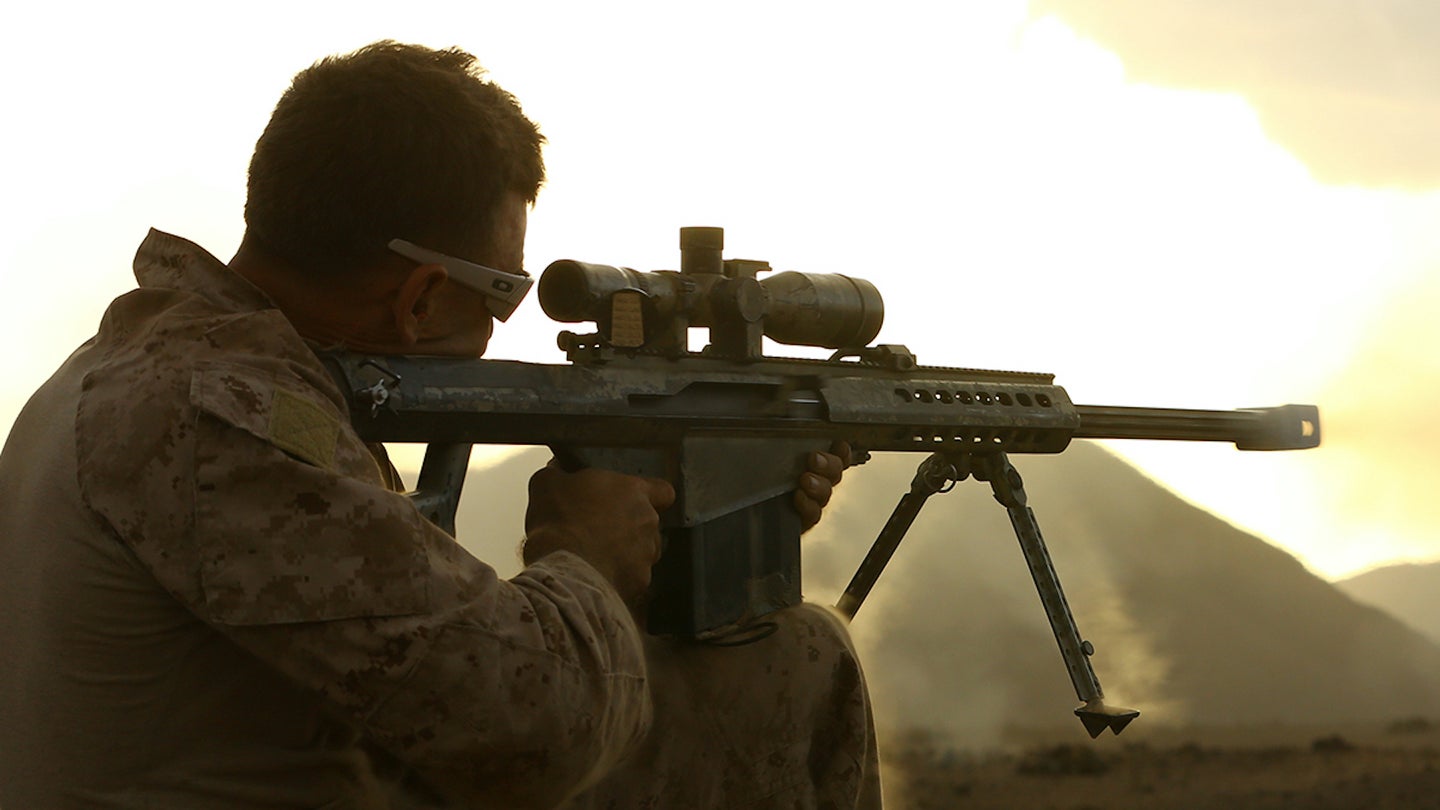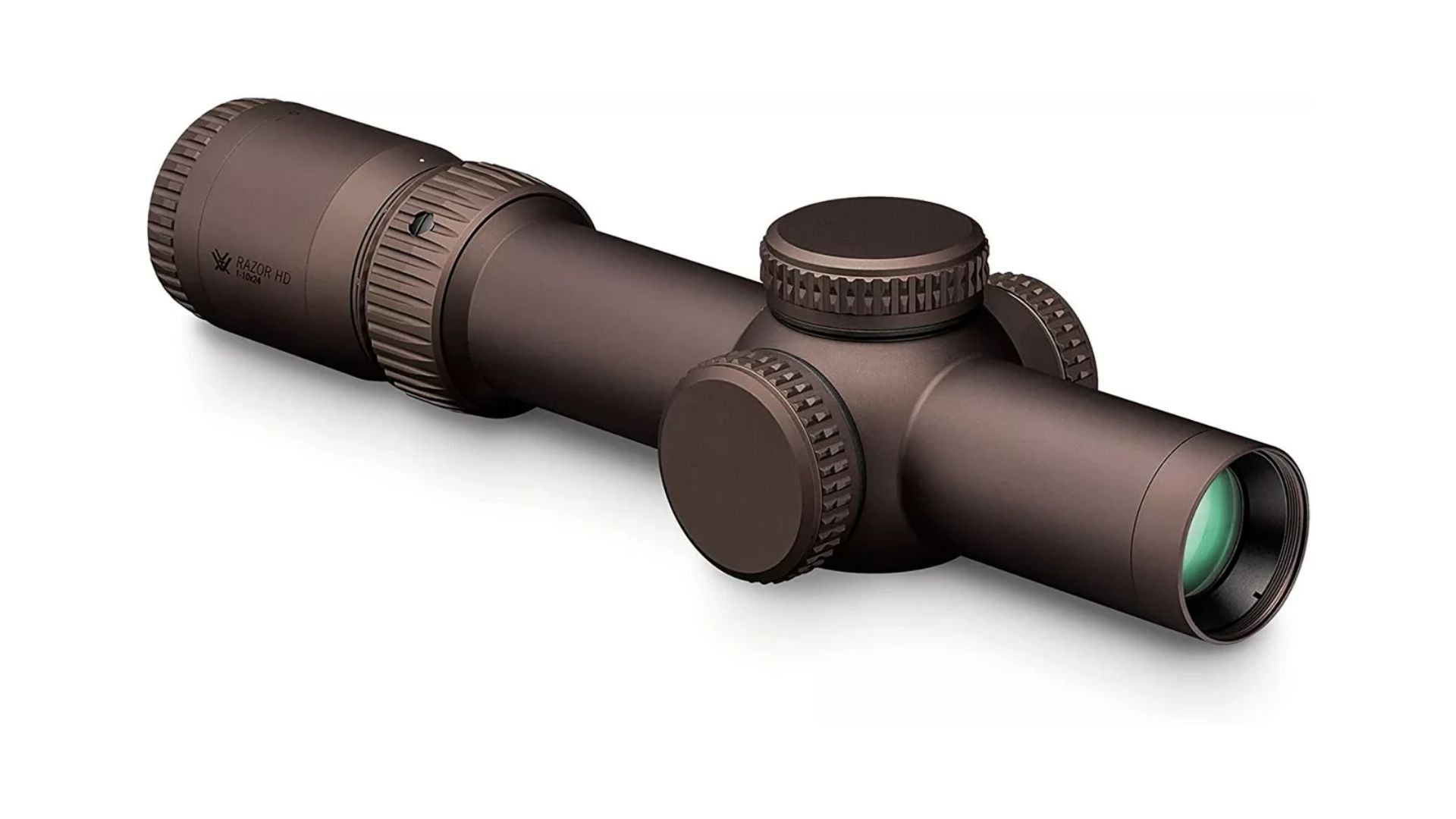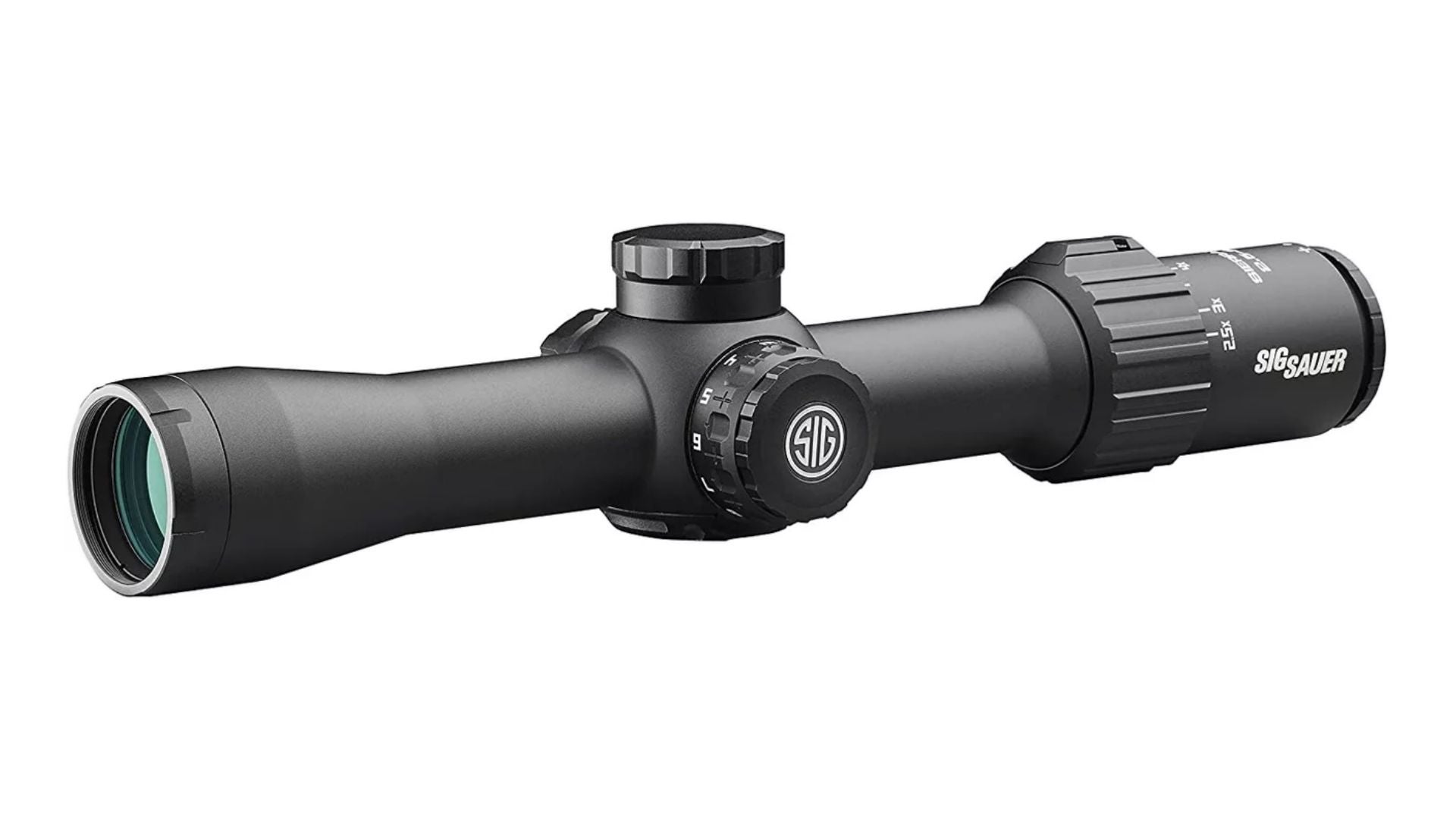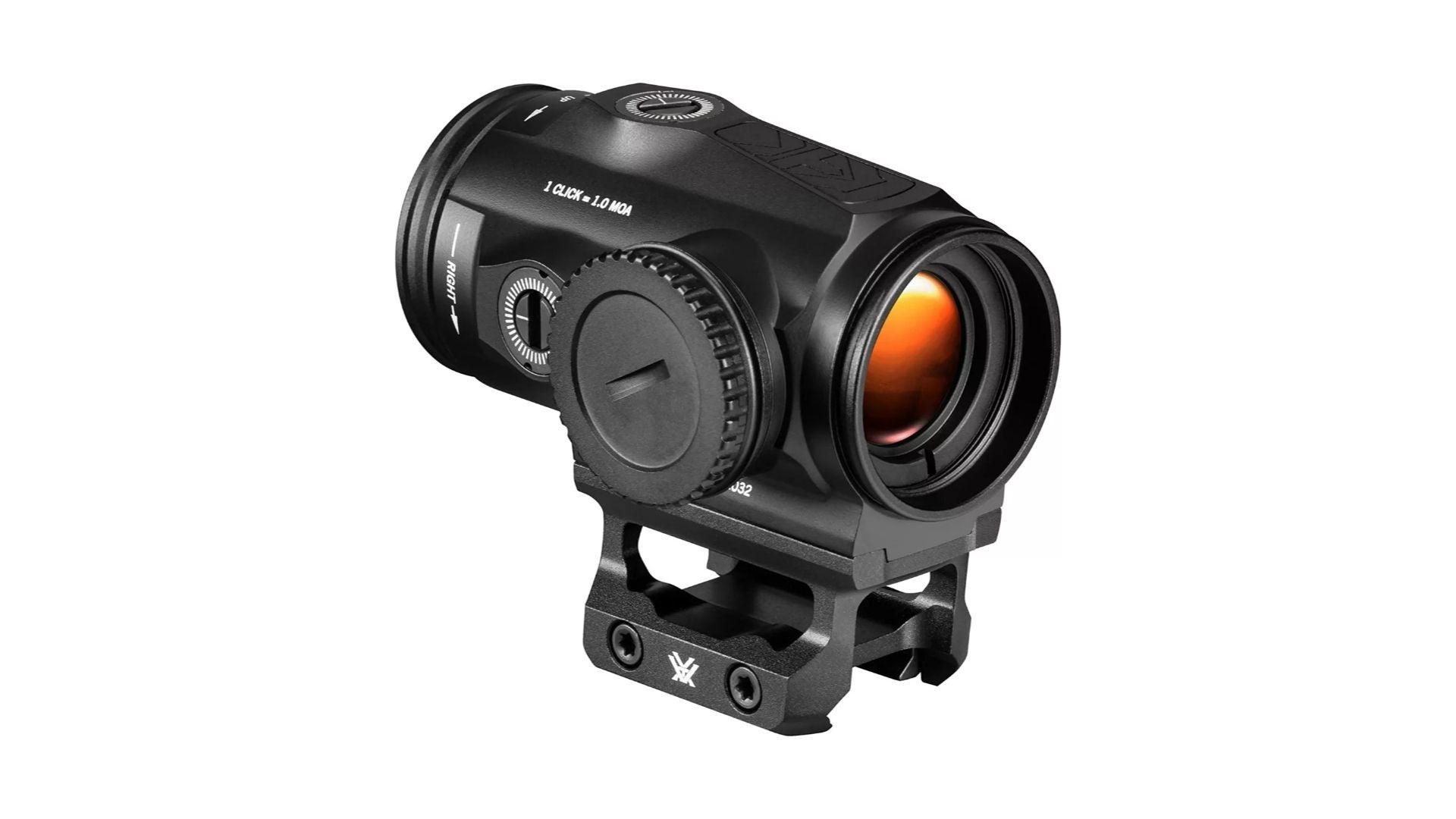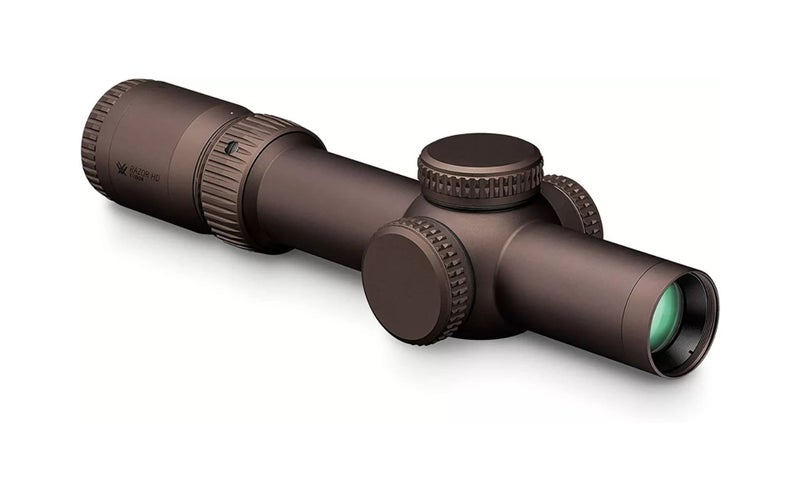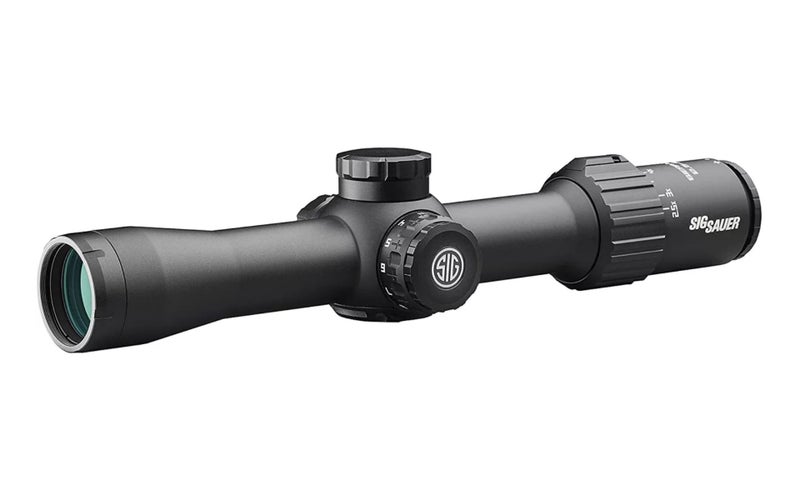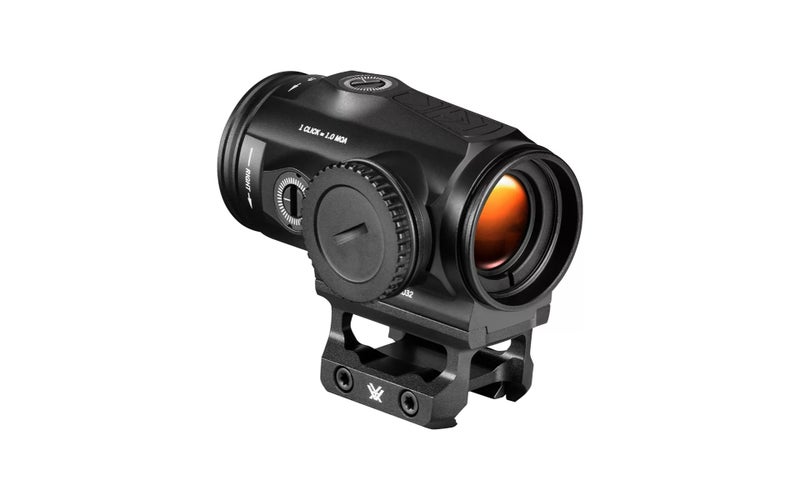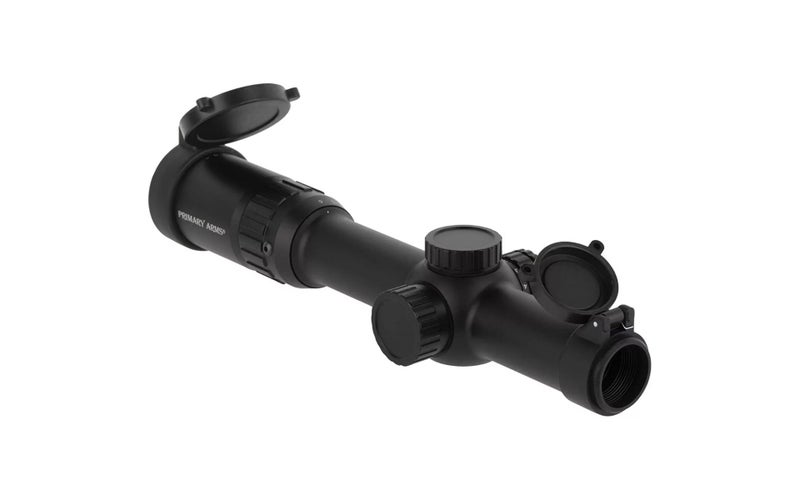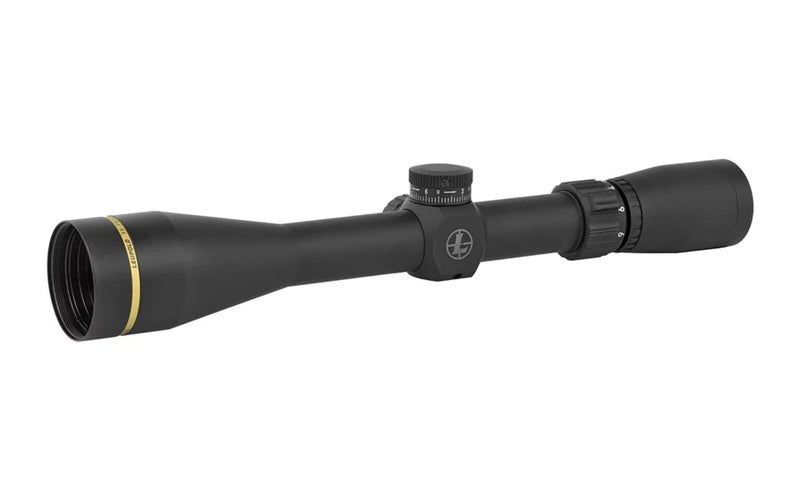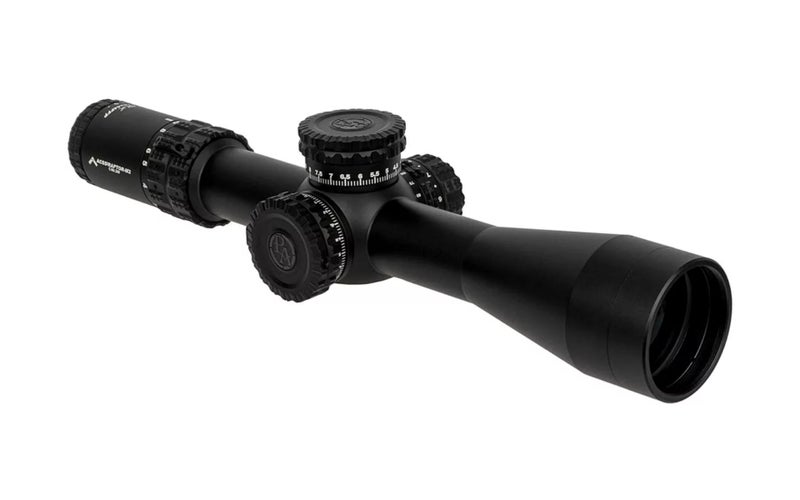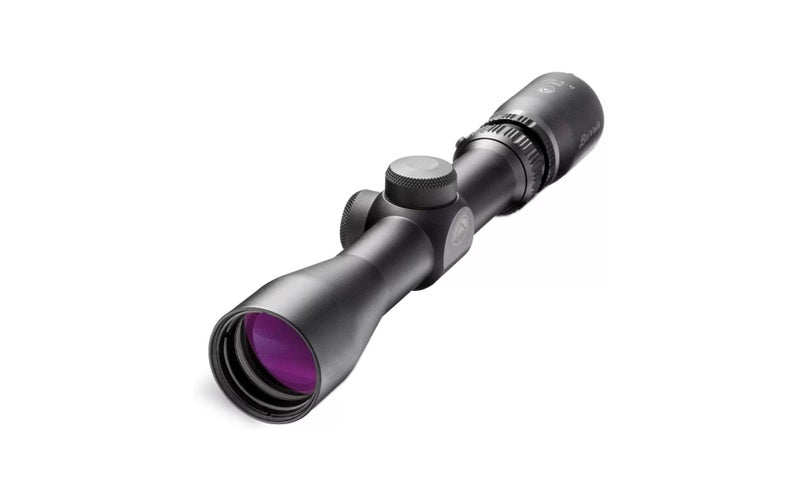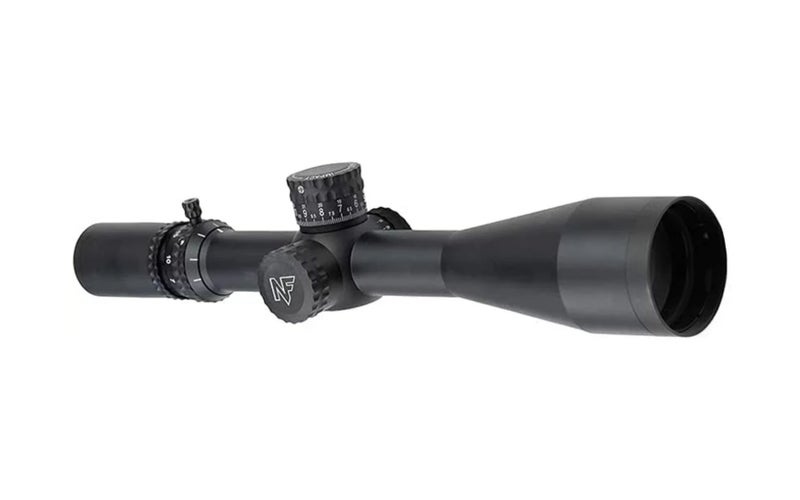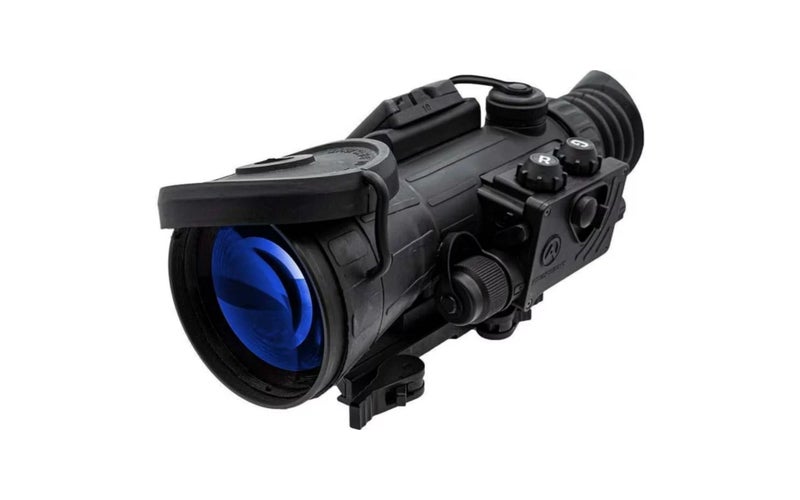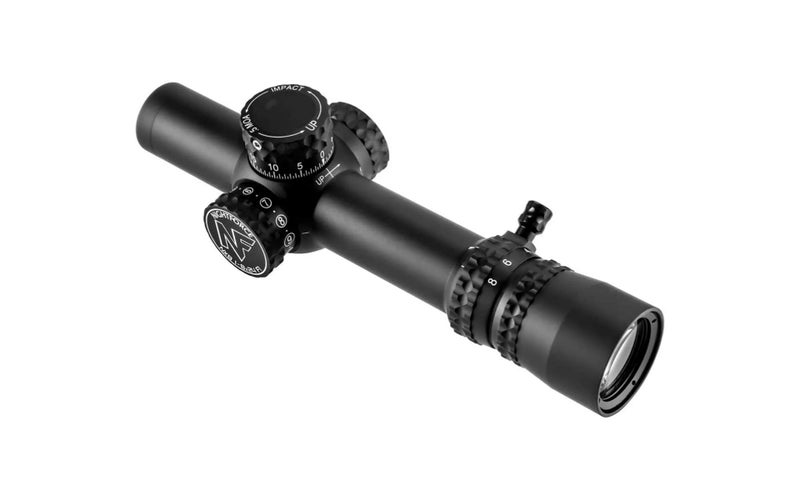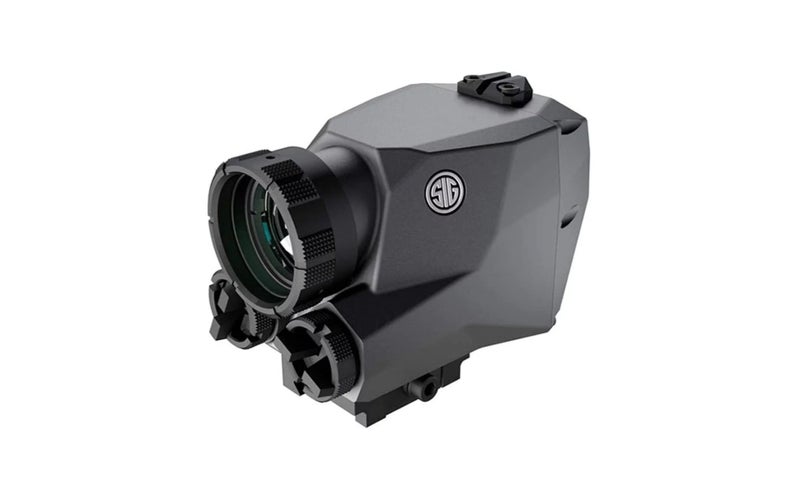We may earn revenue from the products available on this page and participate in affiliate programs.
How do you find the best rifle scopes? Well, you start right here and scroll down. Today, we are covering a complicated topic as simply as possible. Rifle scopes encompass various categories and subcategories, and we are bringing it all to the table.
We hunted down the best optics on the market to bring you options for hunting, AR 15s, owning the night, and more. We aim to provide a little something for everyone and try to find a variety of optics at various price points. Let’s dive in and swim in the world of glass, reticles, and tubes.
Methodology
As a shooter, I’ve been using optics for more than a decade, mainly terrible optics. I’ve learned what qualities make an optic useful and, more importantly, what doesn’t. That expertise in bad optics makes it easy to recognize the good in scopes. Plus, once exposed to quality optics, it’s hard to go back and even harder to suggest bad ones.
I used my own experience to inform my selection for this article and relied upon various trusted sources for my top picks. I used advice and recommendations from experts and professionals like pro shooters, hunters, guides, instructors, and special operations personnel. I also considered suggestions by personalities with a credible reputation like GarandThumb and InRangeTV.
The Vortex Razor HD Gen 3 1-10x is the most versatile rifle scope currently on the market. The magnification range makes it well-suited for close to moderate range shooting.
When you pop this sucker to 1x, it’s practically a red dot allowing you to rapidly engage targets at close range. While the eye box is still a factor, I can punch targets only fractions of a second slower than a traditional red dot.
As the range increases, so does the magnification, and 10x gets you nice and far. The max magnification will take you to the typical 500-yard intermediate rifle range and out to 800 yards with a full-powered rifle cartridge. If your skills and caliber allow, you can press the optic even further.
Vortex offers MOA and MRAD reticles, so you can pair the Razor HD with nearly any caliber and any rifle action. It uses a “Christmas tree” reticle. While it’s not as intuitive as a basic crosshair, it’s incredibly helpful once you learn how to use it. It allows you to quickly make simultaneous wind and elevation adjustments. And, for an optic that offers so much magnification, the Razor HD is incredibly small. It feels more like a 1-6x than a typically long-tubed 1-10x scope. In fact, it’s the exact same size as the Razor 1-6x.
The 1-10x Razor is a rock-solid optic with crystal clear glass. Shooting with the Razor is like watching an HD TV for the first time. Everything’s bright and clear, targets stand out, and colors are easy to see and detect. Pack in a versatile magnification range and multi-use reticle, and you can’t be stopped. In the world of LPVOs, it’s a class leader and a tough option to beat.
- Magnification range: 1-10x
- Optic length: 10.10 inches
- Tube size: 34mm
- The versatile magnification range, FFP design, and take-no-crap durability make it an awesome optic for 99 percent of rifle shooters.
Efficient size
Awesome reticle
Versatile magnification range
Expensive
When it comes to budget optics, there’s usually a tradeoff between good glass and magnification. The best budget scope strikes the right balance of the two, and the SIG Sauer Sierra3 does exactly that. Costing well under five bills, it delivers a versatile 2.5-8x magnification range and excellent clarity.
With edge-to-edge clarity at every magnification setting, the Sierra3 gives you an unbeatable sight picture. You see everything from one side of the scope to the other, and your field of view isn’t interrupted or blurry at the sides. The Sierra3 is in Sig’s popular Ballistic Data Xchange series.
When you buy a SIG BDX scope, you’re buying into a network of electro-optics. SIG makes a compatible BDX rangefinder, which you can pair with the scope and control the two with a smartphone. The system was so good, in fact, one of our sister publications, Outdoor Life, listed the BDX as one of the best scopes of the year in 2018.
Another reason is features like the SpectraCoat, a high-end anti-reflection coating that ensures excellent clarity and no noticeable glare. Even though it’s a budget optic, the Sierra3 is paired with turrets featuring a handy Lockdown Zero System. Once zeroed, you can reset the turrets to the zero setting, and when you make adjustments for windage or elevation, you can turn them right back to your normal zero with ease.
The Sierra3 2.5-8x does have one limitation, though. It’s designed to be used for ultra-lightweight rifles, meaning very lightweight rifles calibrated for non-magnum cartridges. However, SIG makes other Sierra BDX variants for that purpose.
The Sierra3 packs a lot of little features that make this an outstanding budget optic with excellent clarity and great durability. Plus, SIG offers an awesome warranty.
- Magnification range: 2.5-10x
- Optic length: 14.25 inches
- Tube size: 30mm
- Good budget optics are tough to find, but I think the Sierra3 is one of the best. It’s clear, well-made, lightweight, and versatile for a variety of shooters.
BDX compatibility
Affordable
Excellent clarity
Loses some value without BDX use
In 2016, Vortex introduced the Spitfire HD optic for fast-action mid-range shooting. Five years later, the company upgraded the popular fixed-power prism optic. The Vortex Spitfire HD Gen 2 was designed to be more compact and more effective inside and out than the original.
Like the original, the Spitfire HD Gen 2 was designed for AR-pattern rifles, but it’s been upgraded with more mounting options, so it’s compatible with other carbines and traditional rifle designs. It’s also functional with cartridges on the far end of .30 caliber. With that said, the optic is equipped with a BDC designed for 650 yards. However, a man-sized target at that distance is difficult to hit with the available magnification range (3x and 5x). Nonetheless, it’s very capable at 400 and 500 yards, respectively.
This reticle is tied to a 5.56-caliber round with a velocity of 3,050 feet per second, which generally means a 14.5-inch barrel and 55-grain bullet. Obviously, different ballistic configurations will deliver different results, but you can rest assured in that standard pairing. Poor marksmanship skills will actually cause more problems than a longer or shorter barrel, though.
The Spitfire HD Gen 2 offers higher illumination than the original, and you can even use a bit like a red dot. Although it’s not as fast as a red dot, you’ll still be able to put rounds on target rapidly with enough accuracy to make it count. This occluded shooting style takes a fair bit of practice but is a worthwhile skill if you go with a prism optic.
Vortex made the Spitfire HD Gen 2 optic compatible with Aimpoint Micro mounts, so it’s wide open to aftermarket accessories. Additionally, the optic comes with both a high and low mount. I like my optics small and light, and when you compare the size-to-magnification ratio, this is as small as they get.
Like most prisms, you’ll run into a tight eye relief, so get used to being intimate with your optic.
From the ground up, the Spitfire HD Gen 2 appeals to a multitude of shooters. The moderate magnification and reticle make carbine range engagements easy. The multiple mounting options offer a little something for everyone on top of the lightweight, low-profile design.
- Magnification range: 3x or 5x
- Optic length: 3x – 3 inches or 5x – 3.6 inches
- Tube size: NA
- Fitting this much magnification in such a small package is downright impressive. This tiny optic gives your light rifle a lightweight option without sacrificing magnification.
Compact and lightweight
Great reticles
Aimpoint micro mount compatibility
Tight eye relief
Big 1 MOA adjustments
The vast majority of modern optics are aimed at AR-15 owners these days, so there are plenty of options. I approached this choice by thinking that the average AR-15 shooter wants something versatile, easy to use, and designed for the 5.56 NATO cartridge. I arrived at the Primary Arms SLx 1-6x x24mm FFP.
A 1-6x magnification range is perfect for shooting at typical AR-15 ranges. Experienced shooters will be able to engage out to 600 yards with the higher settings of magnification. The Raptor reticle features a BDC, which will take you further and farther with less brain power required for long-range shots.
At 1x, the daylight bright ACSS-Raptor reticle will appear bright but small due to the first focal plane (FFP) design. The FFP setup makes the reticle appear to shrink at lower magnification, so it appears to be a large red dot.
An FFP setup with a small, illuminated reticle makes it easy to shoot up close and swing between targets. The reticle doesn’t clog up your view and makes it easy to shoot reactively and maintain a high situational awareness while shooting.
Once you zoom in for those longer shots, the SLx unveils its awesome ACSS-Raptor reticle with drop points out to 600 for pushing well past carbine ranges. The BDC-type reticle is tied to the 5.56 round and makes long-range shots easy enough for a grunt.
The Primary Arms SLx 1-6x FFP brings a crazy level of affordability to a first focal plane, 1-6x LPVO. It’s rugged, clear, but surprisingly affordable.
- Magnification range: 1-6x
- Optic length: 10.6 inches
- Tube size: 30mm
- The Primary Arms SLX 1-6x offers a versatile, lightweight scope option that's plug-and-play for most AR-15 enthusiasts. It’s well-priced and tough, with an awesome reticle.
Versatile reticle and magnification range
Daylight bright illumination
Affordable FFP design
Not a true 1x
The American company Leupold & Stevens has a reputation for making high-quality rifle scopes, so it should come as no surprise that we picked the Leupold VX Freedom as the best hunting scope. The VX Freedom delivers a high level of visibility, bright and clear colors, and excellent low-light performance — all of which are necessary when you’re inside a deer stand trying to figure out if you’re looking at a deer or the changing autumn leaves in the early morning hours.
When you look through the VX Freedom, you see a brilliant sight picture and vivid colors thanks to what Leupold calls the “Advanced Optical System,” which they also claim adds an extra 10 minutes of usable light. It’s hard to say what makes it tick, but you can’t deny the results. The sight picture is considerably brighter than other optics at the same price point. The 3-9x level of magnification provides more than enough power for hunting deer at 200 yards away or picking off varmints at 50 yards.
Like most Leupold products, the VX-Freedom and its aluminum tube are well-made and durable. The company puts it through “Punisher” testing, meaning “ruthlessly abusive impact testing system.” And in turn, Leupold calls it “waterproof, fogproof, and shockproof,” so it can take a knock or two.
Leupold’s long reputation for success and producing a quality product is evident with the VX-Freedom. You’ll have no problems seeing that buck with the VX-Freedom, and if you see it, you can shoot it.
- Magnification range: 3-9x
- Optic length: 12.39 Inches
- Tube size: 1 inch
- The VX-Freedom presents an optic designed from the ground up from hunting. It’s simple but clear, rugged, and easy to use.
Crystal clear lenses
Magnification range well-suited for hunting
Tough and dependable
Simplistic reticle
For the best first focal plane riflescope, we picked the Primary Arms GLx 2.5-10x. It complimented my Savage Impulse precision rifle almost perfectly. With a Primary Arms GLx, you get a premium-quality optic at an affordable price point. While it isn’t cheap, you’d end up spending more than a grand for a similar rifle scope.
Part of the reason the Primary Arms GLx is here is the Raptor M2 reticle. It’s listed in the company’s versatile Advanced Combined Sighting System, which organizes reticles by caliber. ACSS reticles are designed to give you range holdovers and lead a target. With a 2.5-10x magnification range, it is capable of taking shots anywhere from 25 to 800 yards.
As for the controls, the turrets, magnification ring, and illumination ring are all highly textured and rotate smoothly. It makes zeroing and resetting the zero a breeze. The metal-on-metal adjustments provide great feedback. It’s that tactile click that you can’t help but love. It’s an amazing optic at a great price point.
- Magnification range: 2.5-10x
- Optic length: 12.5 inches
- Tube size: 30mm
- First focal plane scopes litter this list, but the GLx has stood out to me as not only an affordable option, but also a feature-filled and easy-to-use option. The reticle is purposefully designed for FFP use, and it shows.
Awesome reticle
Clear glass
Amazing turrets
Eye relief could be longer
Designed for a scout rifle, the Burris Scout Scope is inherently designed for eye relief. As a scout scope, you mount it ahead of the receiver, so there’s a good bit of distance between you and the eyepiece. Unlike some of its competitors, the Burris Scout Scope is purpose-built for a rifle instead of being a handgun optic posing as a rifle scope
It’s equipped with variable magnification range, a 32mm objective lens, and 9.2 to 12 inches of eye relief. You can adjust the magnification from two to seven power. You’ll find the clarity perfect within those short to medium engagement ranges. The 32mm objective lens lets in a lot of light, and for a Scout Scope, it’s impressive.
Burris installed a simple ballistic plex reticle with the Scout Scope. The long eye relief design makes more complicated designs cumbersome, and they aren’t necessary. Scout rifles are meant for shooting at short- to mid-range targets. The ballistic plex reticle provides a simple crosshair with three ballistic drop points for elevation holdovers and a thin reticle that stands out against a target.
One of the primary benefits of a Scout setup is having a wide field of view for a higher level of situational awareness. When you shoulder a rifle with the Burris Scout Scope, you’ll notice it’s purpose-built to maximize that field of view. The turrets and magnification ring are low-profile, and the optic presents itself as small as possible to preserve that peripheral vision.
Compared to a traditional scope, even one at an affordable price point, the optic won’t deliver as clear and crisp a sight picture. It’s a downside of almost all scout-style scopes. The optic weighs 13 ounces, which can make a lighter rifle feel a little off-balance with the optic mounted so far forward.
The Burris Scout Scope provides you with a well-thought-out long eye relief optic purpose-built for rifles. The magnification range, clarity, and physical scope design make it perfect for Scout rifles and similar weapons.
- Magnification range: 2-7x
- Optic length: 9.7 Inches
- Tube size: 1 inch
- The Burris Scout Scope isn’t a revolver optic playing on a rifle. It’s a real deal rifle scope well-suited for Scout Rifle setups. It’s one of the few quality options left on the market.
Low-profile design
Awesome magnification range
Fingertip adjustable turrets
13 ounces is a little heavy
Long-range shooting — as in hitting targets at 1,000 yards — is no easy task. It requires capable equipment and an even more capable shooter. If you want the best long-range rifle scope, look no further than the Nightforce ATACR 7-35x. It’s our pick because, well, it’s the preferred optic for precision rifle shooters like elite military snipers.
To win a military contract with an outfit like USSOCOM, the ATACR had to have “continuously variable magnification ranging from 3x to less than or equal to 7x and greater than or equal to 25x continuous zoom.” With the 7-35x magnification range, it certainly fits the bill. Plus, it has tank-like durability, so it shakes off water, shock, and recoil.
While most 1,000-yard shooters use something in the .30-caliber range or higher, it’s nothing for the ATACR rifle scope. In fact, the military pairs it with the Barrett MRAD, which is capable of firing multiple calibers that include heavy-hitting cartridge designs like .338 Norma Magnum, .300 Norma Magnum, and 7.62x51mm.
The ATACR offers numerous reticles, and I preferred the MIL-XT, which was partially illuminated and offered plenty of windage and drop calls. The turrets are amazing, with tactile and dead-on accurate clicks. If it’s set for 0.1 MRAD per click, it’s going to be exactly 0.1 MRAD per click. It’s such a notable feature because those ultra-small and precise adjustments require some serious quality control.
- Magnification range: 7-35x
- Optic length: 16 inches
- Tube size: 34mm
- That’s easy, I appealed to authority. The authority of professional, high-level PRS shooters and the authority of USSOCOM who adopted the optic for their snipers.
Brilliant clarity
Excellent magnification range
Amazing reticles
Costs as much as a used Toyota
A night vision scope is one of the hardest to get right, but the Armasight Vulcan 4.5x scope gives you a third-generation night vision optic with decent magnification for nighttime shooting. As of this writing, Gen 3 optics are the top of the line because they provide awesome clarity and range. The Vulcan packs a number of features that make it easy to use and keeps it simple for night vision beginners. At the same time, it packs all the advanced features experienced shooters have come to love.
The Vulcan provides you with a good clear sight picture that makes it easy to identify targets in the dark. The effective range depends on ambient light, but the Vulcan 4.5x does a great job of amplifying every little bit of available light for a good, clear sight picture. Shooting in the dark requires a high-end optic to ensure you have total confidence that the shot you’re taking is safe and at your desired target.
Armasight slapped on a long-range infrared illuminator with the optic to help you out when moon and star light are low. This optic even gives you a waterproof design, which is important if you plan to do anything other than watch birds with it. The included QD lets you slap it on any rail or optic mount you could ever want.
You’ll have no problems seeing the bright illuminated reticle against the green tint of the optic. It stands out and captures your eye. The Armasight Vulcan features a lot of features that make the optic a premium choice. You get variable gain control, bright light cut-off, and the ability to use AA or 123 batteries.
The only thing that makes this optic tough to use is the painfully short 1.7-inch eye relief. You’ll be doing the old nose to charging handle shooting technique to use the optic.
The Vulcan’s Gen 3 clarity ensures you can make the most of that 4.5x magnification and properly identify a target before you pull the trigger. It’s packed with features that keep things simple, but also keep the optic up to date with modern requirements.
- Magnification range: 4.5x
- Optic length: 8.6 inches
- Tube size: NA
- The Armasight Vulcan provides a very capable optical option for night vision guys that’s easy to use and has an all-inclusive package with the mount and illuminator, plus, it’s a Gen 3 optic so the clarity is great.
Super clear
Comes with detachable IR illuminator
Good balance of magnification
Heavy at 2.1 pounds
A few things come to mind when you say “tactical,” and the NightForce NX8 exhibits them all. First, the NX8 is optimized for modern tactical rifles, which often come in intermediate cartridges. Second, the NX8 offers you a versatile optic that functions at a variety of ranges well within the purview of the modern tactical rifle. Lastly, it needs to excel in the basics of being a good optic with clear glass and a tough tube.
The NX8 uses a versatile 1-8x magnification setting so you can conquer close to moderate ranges. You’ll have no issues engaging from five to 500 yards with the NX8. The reticle is one of the brightest when illuminated and can be downright painful on the highest settings.
The bright red reticle is an eye-catcher when shooting at close ranges with the optic’s magnification dialed down to one. At 1x, the illuminated portion is a big, glowing red dot that grabs you by the eye and forces you to see it. You then steer that big red dot where you want it and let loose with it.
As the magnification increases and the reticle grows, the windage and drop estimates come into focus for your longer-range shots. The NX8 is an LPVO with a 1-8x magnification range that’s built like a B52 flying fortress, but it’s not quite that heavy. The NX8 comes with either a MIL or MOA reticle. The reticle stands out against the brilliantly clear glass. Seeing targets at 500 yards isn’t much of a challenge, and within 300 yards, it dominates.
The big donut portion of the reticle is nice until you get to longer ranges. At 300 yards, your big donut starts to obscure a good portion of the target. Beyond that, you’ll likely start to use the elevation holds, which are skinnier and obscure a little less of the target. You’ll run into some scope shadow when firing under a timer due to the tight eyebox, but it’s not enough to completely disrupt your sight picture.
The Nightforce NX8 checks off all the requirements to be a fantastic tactical rifle optic. A versatile magnification range, paired with an awesome reticle, makes it easy to hit targets both near and far. The glass is clear, and it retains the strength and durability that Nightforce is known for. If it’s good enough for SOCOM, it’s good enough for me.
- Magnification range: 1-8x
- Optic length: 8.75 inches
- Tube size: 30mm
- Nightforce makes the best scopes on earth, and the NX8 is no different. It’s the choice of SOCOM and is one helluva well-made optic.
Brilliant clarity
Water-, shock-, and life-proof
Awesome reticle with super bright illumination
Tight eyebox
Short field of view
It’s dark, cold, and you’re tired of sitting in the dirt, and that’s when you finally see something through your thermal scope. It’s just a blurb. Is it the hog you’re hunting? Or a stray dog? If you had the SIG Echo-1, you’d know for sure. The Echo-1 offers you a clear, reflex-like thermal sight. It’s affordable, easy to use, and capable of telling this from that with the various thermal filters you can choose from. Heck, it’s even compact.
If you think night vision is tricky, thermal optics are, oh, so much trickier. You have to factor in refresh rates, sensor sizes, and more. You’re essentially camera shopping and optic shopping all in one. It’s easy to get expensive with thermals.
Still, one of my favorites is one of the more affordable SIG Sauer Echo1 1-2x thermal. It’s built like a reflex sight and well-suited for nighttime ranges. It only offers up to 2x digital zoom, but magnification tends to kill thermal picture quality. Most night hunting and civilian thermal use will be done at close range, which means you won’t need magnification. Magnification can make thermal optics pricey and can affect their resolution as the magnification increases.
At 100 yards, the Echo-1 shines bright and ensures that the hog is more than a blob. Plus, you can switch between a number of image pictures, with white hot, black hot, blue hot, red hot, and even the classic Predator-style rainbow vision. I’m a black hot man myself. To me, it offers the most definition when viewing a target.
The Echo1 features a small 206×156 sensor, but the limited magnification makes good use of it. The image is sharp and clear, and it’s super easy to use. The 30Hz refresh rate is enough to form a clear picture, and the optic works very well with AR-type rifles. It can even mount a mini red dot. Size-wise, it’s only 14.7 ounces and is 4.3 inches long.
Thermals are pricey, but by eliminating a few features, you can get a rock-solid little optic with excellent clarity. The Echo-1 makes it easy to see your chosen target, and the various filters allow you to fine-tune the image for your preferences. The reflex style design keeps things small and light but still offers at least 2x magnification. The Echo-1 won’t break the bank and is the best way to get into thermal optics.
- Magnification range: 1-2x
- Optic length: 4.3 inches long
- Tube size: NA
- Are there better thermals? Sure, but if you are new to the world of thermals, and I assume if you’re reading this, then this is the best possible jumping-off point.
Clear display
IPX6 waterproof rating
Compact design
Multiple reticles
Limited range
Benefits of a rifle scope
The main benefit of using a rifle scope is that it makes accurate shooting easier. A scope can come with features like magnification or illumination that make it easier to see your target and reticles that make it easier to aim. If you have an easier time seeing and aiming at your target, you’ll have an easier time hitting your target as well.
Key features of a rifle scope
Magnification
Most types of rifle scopes are designed to magnify your target, so you can see it from far away. How much magnification you need depends on your range. You’ll want little to no magnification for close distances and a lot of magnification for long distances. How much magnification you get depends on your optic.
Manufacturers will list a scope’s magnification power using three numbers. For example, you might see an optic with “3-9x40mm.” This describes the magnification range and diameter of the objective lens. The “3” is the minimum magnification setting, the “9” is the highest magnification setting, and 40mm refers to the diameter of the objective lens.
Glass clarity
If you’re aiming for precision, you’ll want as clear of a picture as possible. Therefore, you’ll want the image quality to be consistent as you increase your scope’s magnification power. While you won’t be able to determine glass clarity until you actually look through a scope, there are certain characteristics that result in greater glass clarity.
- Extra-low dispersion glass, or ED glass, is an optical term referring to a lens that eliminates chromatic aberrations and maintains clear color palettes. ED glass will help improve image sharpness and contrast at maximum magnification.
- Lens coatings do a lot of things for glass clarity. They protect the glass, maintain clarity, and can reduce glare and/or reflection.
- Place of manufacture is another good indicator of glass clarity. Companies in countries like Japan and Germany typically make optics with premium glass quality.
Durability
A rifle scope should be durable enough to hold a zero through recoil and general wear and tear, which is no easy task given that it’s essentially a tube full of small parts and glass. Some brands have a better reputation for durability than others, but that’s not the only indicator.
In general, lighter scopes with few moving parts will inherently be more durable than heavier scopes with lots of moving parts. The reason is it has less weight moving back and forth and fewer parts to break. For example, you’ll recognize this when you see something like “one-piece tube construction.”
Additionally, manufacturers might give their optics environment ratings. The Ingress Protection rating, or IP rating, is a standard for how well an item holds up against water or dust. The rating system determines to what degree it’s waterproof or dustproof. Also, some manufacturers will say if their optics meet military specifications (Mil-Spec) for resisting impact and vibration.
Reticle
The reticle is what you use to aim to your scope. A simple example of a reticle is a crosshair, which you aim by placing the point in which the lines intersect on the X and Y axis on your target. While there are innumerable reticle designs available, a handful pops up more often than not. Still, you’d pick a reticle based on your needs and preferences.
Simple reticles are better for short-range shooting and quick engagement. For example, when you use a red dot, you just aim the red dot at what you want to shoot. On the other hand, complex reticles like a Bullet Drop Compensator reticle — aka BDC reticle or Christmas tree reticle — essentially offers a series of expanding crosshairs running down the X axis, allowing you to make adjustments without touching your scope.
Types of rifle scopes
Variable scopes
Variable scopes serve the most basic purpose for rifle shooting. They allow you to increase or decrease the magnification of your target so you can see it at various distances. The technology relies on using a large objective lens to magnify your target. In turn, you’ll be able to see farther away with a larger lens, but the scope will be bigger and heavier as well.
Variable scopes are extremely common for shooters of all skill levels, but they’re preferred for precision and long-range shooting. Because they’re designed to magnify far-away targets, they’re a poor choice for close-range shooting.
LPVO
A low-powered variable optic, or LPVO, is designed for close- and mid-range shooting. The magnification setting starts at 1x or 1.55x, meaning there’s little to no magnification of your natural sight, but LPVOs are available for up to 10x magnification.
LPVOs are also equipped with an illuminated reticle, which gives you an easier time seeing at close range. While not as effective as a red dot, it’s pretty dang close. Nonetheless, an LPVO’s reticle works without illumination as well.
LPVOs are one of the more versatile types of optics. They can be used for tactical applications, hunting, competitive shooting, and much more.
Night optics
There are two types of night optics: night vision and thermal. The differences between them are significant in terms of technology and price, but comparing the two is like comparing apples to oranges. They’re both great options for nighttime shooting activities.
A night vision optic amplifies ambient light, so you can see in low light conditions. It reveals the world in hues of green or white, and you can see incredible detail in the imagery depending on the lighting conditions and range. However, too much light will wash out the image. Compared to thermal scopes, night vision costs less.
A thermal optic (aka infrared optic or IR optic) highlights the heat signatures of the objects around you. Hotter objects appear brighter and colder objects appear darker. While you’ll have an easier time identifying living objects, details are not always clear as night vision. However, thermal scopes capture infrared light, which cannot be detected by the human eye, so it’ll work in daylight and absolute darkness. It tends to be more expensive than night vision.
Prism optics
Prism optics are jack-of-all-trades optics. They’re low-profile, rugged, and have simple controls. They have either no magnification or some magnification, but they’re fixed power, so you can’t increase or decrease magnification, which is their main drawback. Lastly, they have a very usable reticle that’s often accompanied by illumination.
Pricing considerations for rifle scopes
Budget
Good budget optics in the $250 to $500 price range typically have a lower magnification range than standard optics. A budget optic should maintain zero and take a fall or two without breaking.
Mid-range
Between $500 and $1,500, mid-range optics is where we get into decent optics for nonpermissive environments and weather, and where we can see slightly higher magnification settings and higher durability specifications. Mid-tier optics start to get into some basic tactical optics with excellent options at the $1,000 mark. We get illumination, fingertip adjustable turrets, and similar fancy features, along with higher levels of magnification with matching clarity at this price point.
Premium
Once you start spending over $1,500, you are into the world of premium rifle optics. All good night optics enter this arena, and the optics used by pro shooters will be here, too. Here we get all the fancy features, including awesome reticles, the smoothest magnification rings, metal-on-metal adjustments, and more. These optics allow you to have more powerful levels of magnification with unbeatable clarity.
FAQs on rifle scopes
You’ve got questions, Task & Purpose has answers.
Q: How do I mount a rifle scope?
A: Follow the instructions. Scopes attach in a variety of ways, and it typically involves ensuring you have the right eye relief and height, attaching the mount to the gun, and the scope to the mount.
Q: How do I zero a rifle scope?
A: By following the directions? In general, you take the optic to the range, look at the target, and fire three rounds. Use the turrets to adjust the elevation and windage to adjust from where your projectiles impacted. Repeat until you are hitting the target.
Q: How much should I spend on a rifle scope?
A: The general rule of thumb is to take the cost of the rifle and spend half of that on an optic. I advise you to spend as much as you can and just avoid crappy optics. However, don’t expect premium performance from a budget optic.
When you buy a rifle, budget for an optic. Make that a consideration from the very beginning. Avoid spending less than $250 unless you find an insane sale or on Black Friday. Spending less than $250 on a magnified optic is a good way to get a not-so-great rifle scope.
Let’s say you find yourself shopping for optics with a budget of $800 and are looking at a $600 optic and a $1,000 optic. I’d save up the extra $200 and go for the better glass every time.
